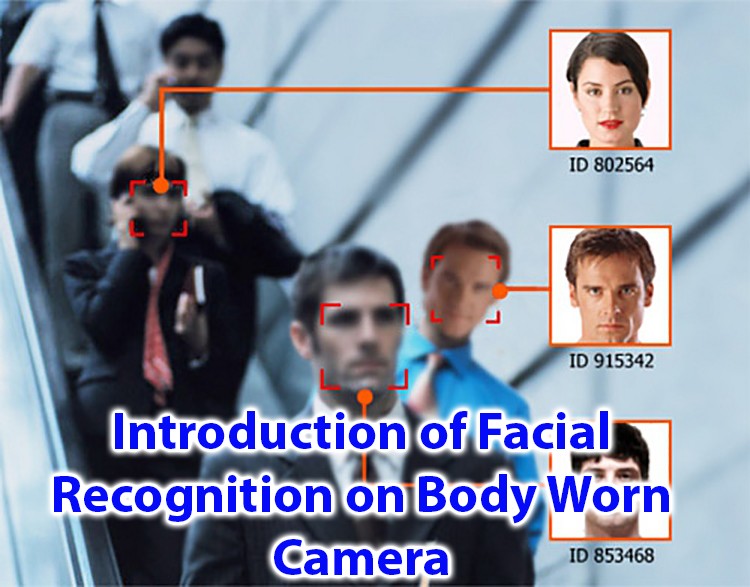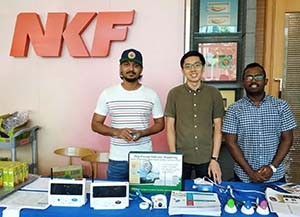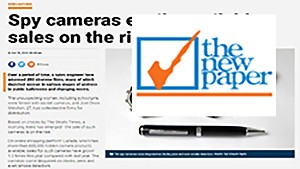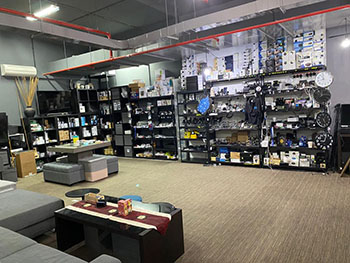Introduction of Facial Recognition on Body-Worn Cameras
Facial recognition is a biometric software application capable of uniquely identifying or verifying a person by comparing and analyzing patterns based on the person’s facial contours. Facial recognition is mostly used for security purposes, but it also helpful for finding missing persons. In fact, facial recognition technology has received significant attention as it has the potential for a wide range of applications related to law enforcement as well as other enterprises.
Facial recognition security cameras can memorize the faces of persons of interest, networks of gang members, wanted criminals and suspects in crimes. The tool alerts business owners when unwelcome individuals arrive on their property.
How Facial Recognition Works
Amid concerns over privacy and accuracy, it’s important to understand how facial recognition works. Facial recognition relies on several technologies to work: An image capture system (camera or video surveillance), artificial intelligence and machine learning. Facial recognition maps facial features from a photo or video and converts them into digital biometric data. It compares this digital signature to a database of known faces to find a match.
There are four basic steps to facial recognition:
- The system captures a picture of your face as you walk by. This can be a video image or a photograph.
- Facial recognition software reads the geometry of your face. It looks at things such as the distance between your eyes, forehead to chin height, and facial landmarks to develop a digital signature of your face.
- Your facial signature, a mathematical formula of ones and zeros unique to you, is then compared to a database of known faces.
- The system determines your identity.
Where to use Facial recognition?
Airports are one of the most crowded places. The increasing number of people also increases the risk of security problems. Even though the airports are equipped with monitoring tools, CCTV cameras, and other security systems, there is still security leakage. With the deployment of face recognition technology, airport security can be enhanced. Cameras are installed inside city buses, school buses, public buses, yachts, ferryboats, and trains to scan the faces of the passengers and compare them to a database of images. If there is a presence of a wanted person, the driver and concerned authorities get alerted.
Facial recognition was initially designed for identity assurance and access control, to operate in controlled conditions and to confirm that a person is who they claim to be. Now cameras scan crowds, comparing every passing face to a watch list.
Many law enforcement agencies make use of facial recognition to analyze recorded video footage, saving time and effort, it is much harder to use in real-time, in the real world. The mathematics of checking every passerby in a crowded public space against even small watch lists pushes facial recognition to its limits. Only the “Mini WIFI/GPS/3G/4G Body-Worn Camera – Facial Recognition (BWC058-4G)” can cope.
In contrast to facial recognition, bodycams have already seen mass adoption. These body-worn video devices now accessorize police uniforms worldwide, providing evidence management, officer safety, and public reassurance. Bodycams record footage for offloading into physical Some bodycams also live stream video back to control rooms. Others link to weapon holsters to automatically trigger video recording. As mobile devices evolve, the newer models of bodycams which are based on smartphone platforms are set to become more powerful. This means the two technologies will converge. Facial recognition on bodycams is an obvious next step. Empowering officers with watch lists of wanted criminals, persons of interest, missing children, vulnerable adults.
Setting Boundaries
The use of facial recognition on bodycams also offers defense against accusations of racial bias. Policies can be set to prevent officers searching those not identified by facial recognition, even when stopped. Where the accusation is made that stop and search over-polices low-level crime in specific communities, facial recognition on bodycams offers a balance. It is this kind of safeguarding that will help prompt broader adoption.
Facial recognition on bodycams will also provide secondary verification for matches from surveillance vehicles and CCTV cameras. Following an initial match, an officer on foot approaches the person and runs a second check from a bodycam, running from the exact same watch list. Only if there is also a match is anything taken further. In of itself, this is a very material safeguard against so-called false positives. It also provides a person to person interaction before any final decision on an arrest is made.
Next Generation
The first generation of bodycams in operation today has focused on recording video for evidence management systems. Now, Bodycam shifts the focus to live video streaming, facial recognition, and on-device Edge-AI. This next generation of IoT (internet of things) bodycams will join the billions of other IoT devices that will be deployed on 4G and 5G networks over the coming years. Designed to be networked, to share data, to split the processing from edge to center, these devices will evolve away from ‘just in case’ video recording towards an essential policing tool.
And so, as far as policing is concerned, Next years will be marked as a turning point for facial recognition. Tests will morph into deployments. Deployments will yield results. The arguments will be won. The majority of the public, ultimately, will opt for personal security and safety over arbitrary privacy. In the wake of multiple calls for restrictions and regulation, a survey published before some months found that only 18% of Americans believe facial recognition should be strictly limited at the expense of public safety. And this is where bodycams will come into their own. If we could train our police officers to recognize every known offender, every unidentified person of interest, every vulnerable adult or missing child, to a 99% or greater level of accuracy.
Pros of Facial Recognition
- Increased Security: One of the biggest pros of facial recognition technology is that it enhances safety and security. From government agencies to personal use, there is an increasing demand for advanced security and surveillance systems. Organizations can easily identify and track anyone who comes onto the premises, and they can easily flag visitors who aren’t welcome. It can be very helpful when it comes to finding potential terrorists. Plus, there is no key, badge, or password that can be stolen or lost.
- Fast and Accurate: With the ever-increasing demand for speed and the growing number of cyberattacks, having fast and accurate technology is key. Facial recognition technology provides verification that is convenient, quick, and accurate. Although possible, it is very difficult to fool facial recognition technology, which makes it beneficial in helping prevent fraud.
- No Contact: Facial recognition is preferred over fingerprint scanning because of its non-contact process. People don’t have to worry about the potential drawbacks related to fingerprint identification technology, such as germs or marks.
Cons of Facial Recognition
- High Implementation Costs: Facial recognition requires top-quality cameras and advanced software to ensure accuracy and speed. However, Allied Market Research predicts that technological advancements are likely to reduce the prices of facial recognition systems in the future.
- Data Storage: The video and high-quality images required for facial recognition take up a significant amount of storage. In order for facial recognition systems to be effective, they only process about 10 to 25% of videos. This leads organizations to use numerous computers to process everything and to do it quickly.
- Changes in Appearance and Camera Angle: Any major changes in appearance, including facial hair and weight changes, can throw off the technology. In these instances, a new picture is required. Camera angle can also cause issues because multiple angles are needed to identify a face.
Conclusion
There is presently no legislation that directly addresses the regulation and governance of police body-worn cameras. The legislation is clearly lagging far behind the rapid pace at which surveillance technology, like body-worn cameras, are developing. The absence of appropriate legislation creates the danger that the privacy of individuals may become risked as a result of the adoption of new surveillance technology.
Facial recognition is a powerful technology but it has to be used wisely. On one hand, it brings immense advantage to the companies and end-users, helps them enhance their security and track down the trespassers. On the other hand, it may be misused for personal benefit and lead to some serious consequences. It will take at least 5 years for facial recognition to come in complete correspondence with human rights and one’s privacy.
Body-worn cameras with facial recognition to be used correctly and to minimize potential negative consequences and risks to privacy, appropriate legislation needs to be enlisted that directly addresses the use of these devices. There is a potential for body-worn cameras to be a useful tool for achieving better accountability; however, this is only possible if the appropriate privacy protocols become mandated by law.
References
Anon., n.d. World Security Report. [Online]
Available at: http://www.worldsecurity-index.com/shareDir/documents/15508405770.pdf
Bud, T. K., n.d. BWVSG. [Online]
Available at: http://www.bwvsg.com/resources/procedures-and-guidelines/
DashMagazine, n.d. M. [Online]
Available at: https://becominghuman.ai/the-threats-and-benefits-of-facial-recognition-what-should-we-know-17008f69ae74
Doffman, Z., n.d. [Online]
Available at: https://www.forbes.com/sites/zakdoffman/2019/01/10/body-worn-2-0-how-iot-facial-recognition-is-set-to-change-frontline-policing/#4e0a5cad1ff3
Marr, B., n.d. Forbes. [Online]
Available at: https://www.forbes.com/sites/bernardmarr/2019/08/19/facial-recognition-technology-here-are-the-important-pros-and-cons/#28c79e8e14d1
Team, R. M., 2019. RTI. [Online]
Available at: https://www.1rti.com/pros-cons-of-facial-recognition-technology/
Wendt, R., 30 july 2019. SECURITY SALES & INTEGRATION. [Online]
Available at: https://www.securitysales.com/news/facial-recognition-tech-scrutiny/









